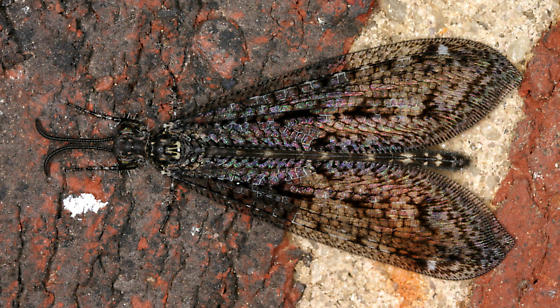B. nebulosus is a carnivore and only feeds as a larvae. It mainly feeds on ants, but it will also devoir any other passing insect similar in size. Some species of antlion larva will consume adult antlions if they get too close. When the antlion gets ahold of its prey, the mandibles are used to suck the insect dry of its juices. The larvae do not have a complete digestive system; waste is expelled when the gut and anus join at the pupal stage as meconium . The larvae feed any time during the day and store energy in the form of fat for when food is scarce. During the winter months, B. nebulosus hibernates under the surface as a larva or in a cocoon. When the soil or sand is wet, antlion larva are unable to eat, and some starve during long periods of rainfall. This organism can be in its larva stage for up to three years.
As an adult, antlions have a straight-through digestive system. They also respire with a tracheal system. After oxygen enters the trachea, it dissolves into the tracheole liquid and diffuses into the cells. Antlions use an open circulatory system for internal transportation of nutrients. Hemolymph is the nutrient and oxygen carrier within the open circulatory system. Because the adults do not feed, they only live for around twenty days. Adults save energy by sitting on a dark colored plant during the day until it is safe to mate at night.

Image by Patrick Coin on bugguide.net
For information on the life cycle of B. nebulosus, go to the Life Cycle page.

